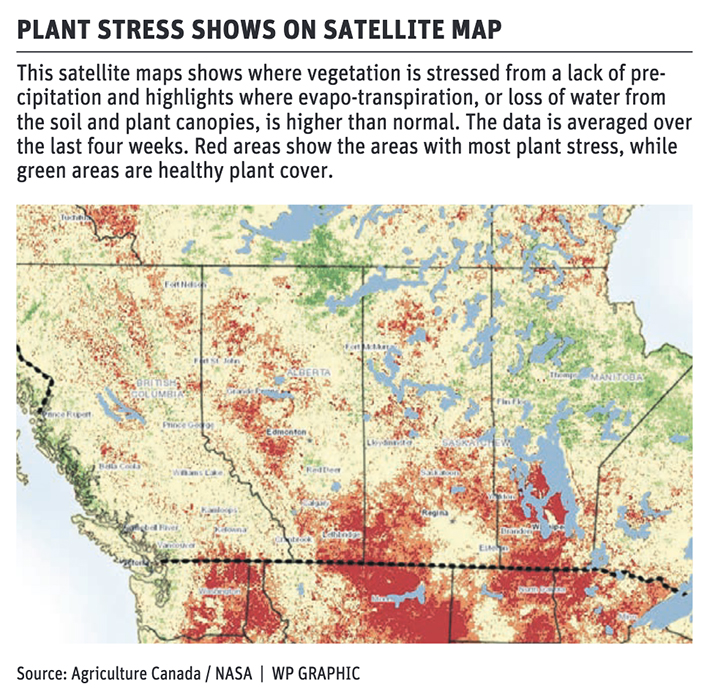Precipitation statistics reveal year of struggles

Heat has also been a problem, and market analysts believe canola yields could be 50 percent of normal on many farms
Winnipeg is short an entire foot of moisture.
In a normal year, the city and much of eastern Manitoba receives about 520 millimetres of precipitation in the form of rain and snow.
However, from Aug. 1, 2020, to July 15, 2021, the Environment Canada weather station in Winnipeg has recorded 232 mm of precipitation, which means much of eastern Manitoba is 288 mm below normal precipitation for the last year. That’s nearly 12 inches less rain and snow than normal.
That statistic neatly explains why lawns are dead, pastures are brown and crops are suffering across most of the Prairies this summer.
Other towns and cities aren’t quite as dry as Winnipeg, but many are severely short on precipitation.
In Weyburn, Sask., the weather station has recorded 205 mm of precipitation from Aug. 1 to July 15. Normal precipitation for Weyburn in a year is 423 mm, so the city is about nine inches short of precipitation.
As an example of how dry it is, if 50 mm of rain fell on Weyburn and the surrounding area before the end of July, parts of southeastern Saskatchewan would still have an annual precipitation deficit of 170 mm.
The lack of soil moisture has hindered grain, oilseed, pulse and forage crops in Western Canada, but intense heat has turned the water shortage into a crisis.
Daily high temperatures of 30-38 C scorched crops in the last week of June and first two weeks of July. An evapo-transpiration map from Agriculture Canada shows that water loss from the soil and plant canopies is much higher than normal in July.
The heat damage to crops is much broader than Manitoba, Saskatchewan and Alberta. Searing temperatures have dried out crops in much of the northern Plains, including Montana, North Dakota, South Dakota and into Wyoming.
As of the middle of July, the U.S. Department of Agriculture rated subsoil moisture in the state as 80 percent short or very short.
Many farmers on the Prairies have compared 2021 to 1988, a year of severe drought when the average canola yield in Manitoba and Saskatchewan was 18 bushels per acre.
This year, some market analysts believe canola yields could be 50 percent of normal on many farms because canola plants struggle to form pods when temperatures are in the 30s during the bloom period.
“The crop damage has really been done,” said Errol Anderson of ProMarket Communications in Calgary. “We’re hearing that a lot of fields may only be 10-15 bu. per acre.”
Source: producer.com



